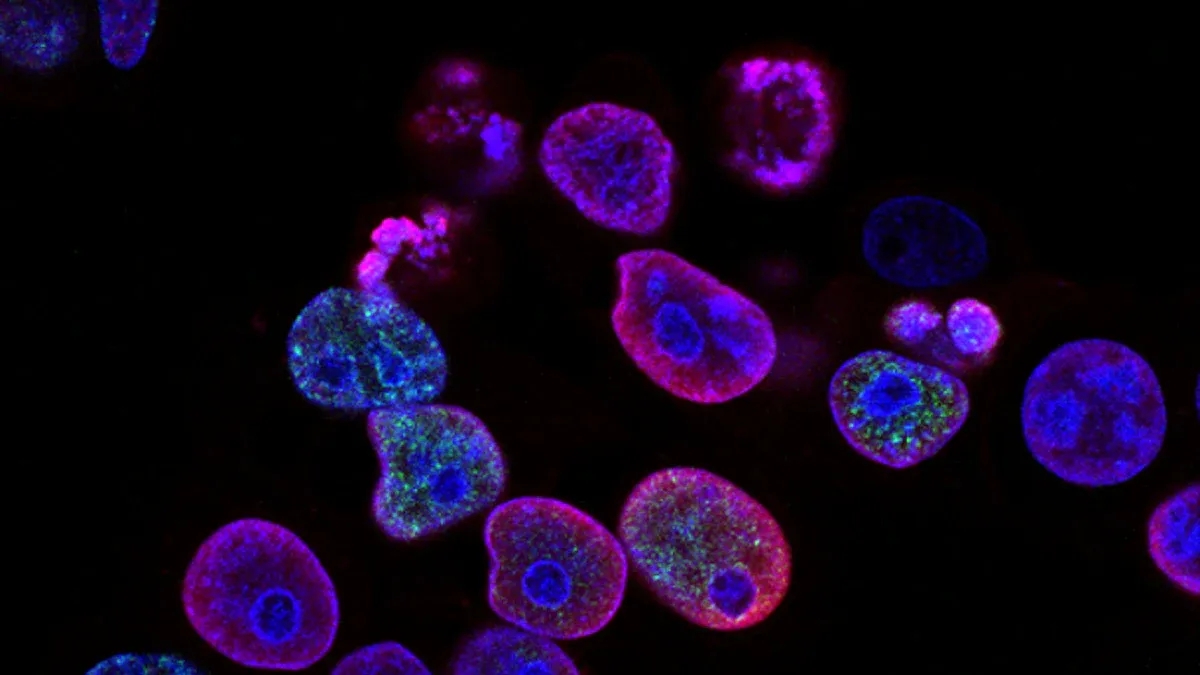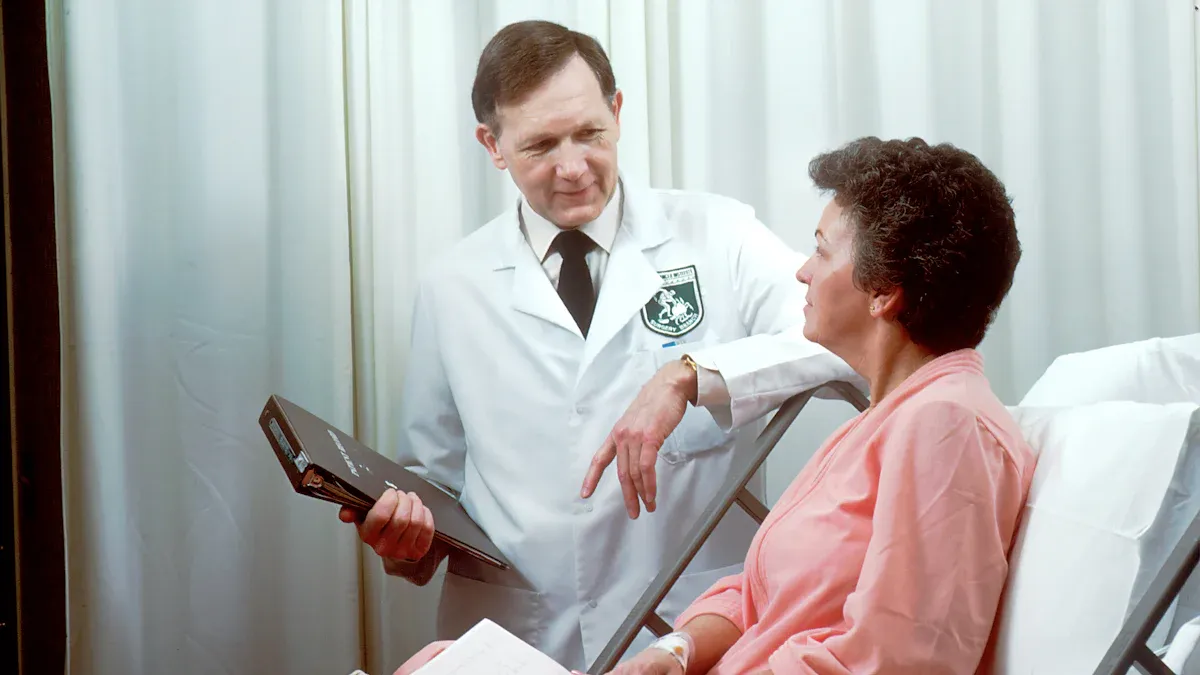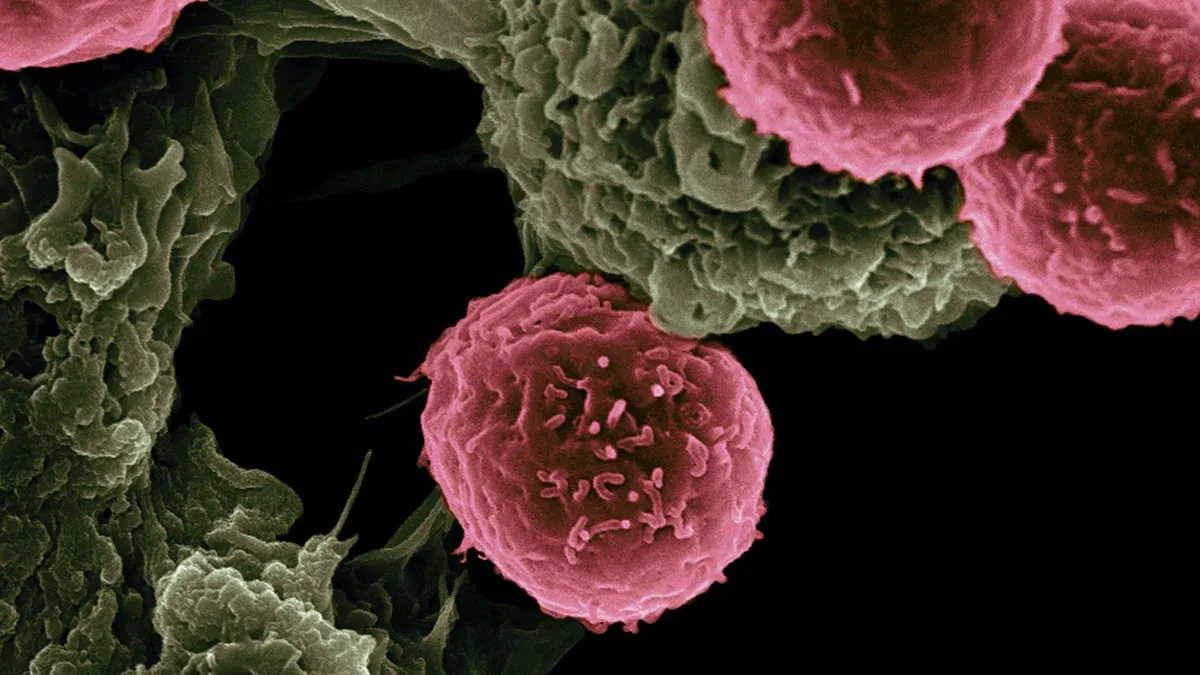What Is Chronic Lymphocytic Leukemia

Chronic lymphocytic leukemia is a type of blood cancer that affects your white blood cells, specifically lymphocytes. These cells play a critical role in protecting your body from infections. This condition is the most common form of leukemia in adults, with an estimated 20,700 new cases expected in 2024. It often develops slowly, and many people may not notice symptoms in the early stages.
Did you know? The median age of diagnosis for chronic lymphocytic leukemia is 70 years, and it is most frequently diagnosed in individuals aged 65–74.
Understanding this disease can help you recognize its signs and seek timely medical advice.
Key Takeaways
Chronic lymphocytic leukemia (CLL) is a slow-growing blood cancer. It mostly affects older people, with most diagnosed around age 70.
Early signs of CLL include feeling very tired, losing weight without trying, and getting sick often. Spotting these signs early helps get medical care sooner.
Changes in lymphocyte genes and aging are big risk factors. Having family members with CLL or contact with certain chemicals also raises the risk.
Doctors use blood tests, checkups, and sometimes bone marrow tests to diagnose CLL. Finding it early makes treatment work better.
Treatments include waiting and watching for slow cases or using chemotherapy and special medicines. Staying active and eating healthy can help control symptoms.
Symptoms of Chronic Lymphocytic Leukemia

Early Symptoms
Fatigue and weakness
You may feel unusually tired or weak, even after getting enough rest. This happens because chronic lymphocytic leukemia affects your blood cells, reducing their ability to carry oxygen throughout your body. Over time, this can lead to overwhelming fatigue that interferes with daily activities.
Unexplained weight loss
Losing weight without trying can be an early sign of chronic lymphocytic leukemia. This occurs as your body uses more energy to fight the disease. If you notice a significant drop in weight, it’s important to consult your doctor.
Frequent infections
Your immune system weakens as abnormal lymphocytes accumulate in your blood. This makes you more prone to infections, such as those affecting your skin, lungs, or kidneys. These infections may occur more often or take longer to heal than usual.
Tip: Pay attention to recurring illnesses or infections that seem unusual for you. These could be early warning signs of chronic lymphocytic leukemia.
Advanced Symptoms
Swollen, painless lymph nodes
You might notice lumps under your skin, especially in your neck, armpits, or groin. These swollen lymph nodes are often painless but can persist as the disease progresses.
Enlarged spleen or liver
An enlarged spleen or liver can cause discomfort or a feeling of fullness in your abdomen. This may make you feel full after eating only a small amount of food.
Easy bruising or bleeding
Chronic lymphocytic leukemia can reduce your platelet count, leading to excessive bruising or bleeding. You might notice frequent nosebleeds or bruises that appear without any clear cause.
Night sweats, fever, and chills
You may experience night sweats that soak your clothes or bedding. Low-grade fevers and chills are also common as your body reacts to the disease.
Shortness of breath and anemia-related symptoms
As the disease progresses, anemia can develop due to a lack of healthy red blood cells. This can cause shortness of breath, pale skin, and extreme tiredness.
Symptom Type | Early Symptoms | Advanced Symptoms |
|---|---|---|
Fatigue | Unusual tiredness | Overwhelming fatigue due to anemia |
Weight Loss | Unexplained weight loss | Significant weight loss may continue |
Lymph Nodes | Swollen or enlarged lymph nodes | Persistent lymph node enlargement |
Infections | Rare infections | Recurrent infections due to leukopenia |
Bruising | N/A | Excessive bruising or bleeding due to thrombocytopenia |
Recognizing these symptoms early can help you seek timely medical advice and improve your chances of managing chronic lymphocytic leukemia effectively.
Causes and Risk Factors of Chronic Lymphocytic Leukemia
Causes
Genetic mutations in lymphocytes
Chronic lymphocytic leukemia often begins with genetic mutations in lymphocytes. These mutations disrupt normal cell functions, leading to uncontrolled growth and survival of abnormal cells. Some of the most common mutations include:
Mutation | Description |
|---|---|
NOTCH1 | Found in 10%–15% of patients, linked to faster disease progression and poorer outcomes. |
SF3B1 | Present in about 10%–15% of cases, causing protein processing issues and resistance to certain treatments. |
TP53 | Frequently associated with deletion 17p, leading to rapid disease progression and resistance to standard therapies. |
These mutations play a critical role in the development and progression of the disease.
Abnormal cell growth in the bone marrow
The bone marrow produces too many immature white blood cells, known as lymphoblasts. These cells fail to mature properly and crowd out healthy blood cells. This process leads to:
Reduced red blood cells, causing anemia.
Lower platelet counts, increasing the risk of bleeding.
A weakened immune system, making you more prone to infections.
Abnormal lymphocytes can also spread to other parts of your body, further complicating the condition.
Risk Factors
Age (most common in adults over 60)
Your risk of developing chronic lymphocytic leukemia increases significantly with age. Nearly 90% of cases occur in individuals over 50, with the median age of diagnosis being 70.
Family history of CLL or other blood cancers
If a first-degree relative has chronic lymphocytic leukemia, your risk more than doubles. This suggests a strong genetic component in the disease.
Exposure to certain chemicals (e.g., Agent Orange)
Exposure to chemicals like Agent Orange has been linked to a higher risk of developing chronic lymphocytic leukemia. Studies, including those by the National Academy of Sciences, have confirmed this connection.
Gender (more common in men)
Men are more likely to develop chronic lymphocytic leukemia than women. While the reasons remain unclear, this disparity highlights the importance of regular health check-ups, especially for men over 60.
Understanding these causes and risk factors can help you assess your risk and seek medical advice if needed.
Diagnosis of Chronic Lymphocytic Leukemia
Medical History and Physical Exam
Questions about symptoms and family history
Your doctor will start by asking about your symptoms and their duration. They may inquire about fatigue, weight loss, or frequent infections. A detailed family history is also essential, as having relatives with chronic lymphocytic leukemia or other blood cancers increases your risk.
Checking for swollen lymph nodes or an enlarged spleen
During the physical exam, your doctor will check for swollen lymph nodes in areas like your neck, armpits, or groin. They may also feel your abdomen to detect an enlarged spleen or liver, which are common in advanced stages of the disease.
Diagnostic Tests
Blood tests (e.g., complete blood count, flow cytometry)
Blood tests are the first step in diagnosing chronic lymphocytic leukemia. A complete blood count (CBC) measures the number of lymphocytes in your blood. Lymphocytosis, or more than 5,000 lymphocytes per microliter, often suggests CLL. Additional abnormalities include low red blood cell and platelet levels. Flow cytometry confirms the diagnosis by identifying specific markers on lymphocytes.
Bone marrow biopsy
A bone marrow biopsy provides critical information about your condition. Doctors usually perform this test before starting treatment. They collect samples from your pelvic bone to examine the bone marrow's structure and function. This test helps determine the extent of the disease and guides treatment decisions.
Evidence Type | Description |
|---|---|
Guidelines | Bone marrow biopsy is not required at diagnosis but recommended pre-treatment. |
Clinical Significance | Provides biological and clinical insights into chronic lymphocytic leukemia. |
Imaging tests (e.g., CT scans, ultrasounds)
Imaging tests like CT scans or ultrasounds help detect enlarged lymph nodes, spleen, or liver. These tests provide a clearer picture of how far the disease has spread. While not always necessary, they are useful for staging and treatment planning.
Diagnostic Test | Description |
|---|---|
Blood Tests | Measures lymphocyte levels; lymphocytosis suggests CLL. |
Peripheral Blood Smear | Examines blood for abnormal lymphocytes, including smudge cells. |
Flow Cytometry | Identifies specific markers on cells to confirm CLL presence. |
Lymph Node Biopsy | Removes lymph node tissue to check for leukemia cells; not always necessary for diagnosis. |
Bone Marrow Aspiration and Biopsy | Tests bone marrow samples if other tests are inconclusive; usually done together. |
These diagnostic methods work together to confirm chronic lymphocytic leukemia and assess its progression. Early and accurate diagnosis is key to managing the disease effectively.
Treatment Options for Chronic Lymphocytic Leukemia

Watchful Waiting
Monitoring without immediate treatment for slow-progressing cases
For some patients, immediate treatment may not be necessary. This approach, called watchful waiting, is often recommended for early-stage chronic lymphocytic leukemia (CLL). Your doctor may suggest this if your CLL is asymptomatic or progressing slowly. Instead of starting treatment right away, you will undergo regular check-ups to monitor your condition.
During these visits, your doctor will:
Examine your lymph nodes and spleen for changes in size.
Perform blood tests to track lymphocyte levels and disease progression.
Treatment begins only if active disease symptoms appear, such as:
Progressive bone marrow failure.
Enlarged or symptomatic spleen or lymph nodes.
Rapidly increasing lymphocyte counts.
Autoimmune complications or other disease-related symptoms.
Research shows that watchful waiting does not harm patients with early-stage CLL. It helps you avoid unnecessary side effects from treatments that may not be needed yet.
Medical Treatments
Chemotherapy
Chemotherapy remains a common treatment for CLL. It uses drugs to kill cancer cells or stop their growth. Some of the most frequently used chemotherapy drugs include:
Chlorambucil (Leukeran®)
Cyclophosphamide (Cytoxan®)
Bendamustine (Treanda®)
These medications may be used alone or in combination, depending on your specific case.
Targeted therapy (e.g., monoclonal antibodies)
Targeted therapies focus on specific proteins or markers on leukemia cells. Monoclonal antibodies, such as Rituximab, Ofatumumab, and Obinutuzumab, are lab-made proteins that attach to cancer cells. They help your immune system recognize and destroy these cells. This approach can be highly effective, especially when combined with chemotherapy.
Immunotherapy
Immunotherapy boosts your immune system to fight cancer. It includes treatments like immune checkpoint inhibitors and CAR T-cell therapy. These therapies train your immune cells to target and eliminate leukemia cells more effectively.
Advanced Treatments
Stem cell transplant
Stem cell transplants replace diseased bone marrow with healthy stem cells. This option is usually reserved for younger, healthier patients or those whose CLL has not responded to other treatments. While it offers potential benefits, such as long-term remission, it also carries risks like infections, organ damage, and graft-versus-host disease (GVHD).
Clinical trials for experimental therapies
Clinical trials provide access to cutting-edge treatments that are not yet widely available. These trials test new drugs, combinations, or approaches to improve outcomes for CLL patients. Participating in a trial may offer hope if standard treatments are not effective for you.
Tip: Ask your doctor if you qualify for a clinical trial. It could be an opportunity to explore innovative therapies.
Living with Chronic Lymphocytic Leukemia
Managing Symptoms
Staying active and maintaining a healthy diet
Staying physically active can help you manage fatigue and improve your overall well-being. Even light activities, such as walking or yoga, can boost your energy levels and reduce cancer-related symptoms. A balanced diet is equally important. Focus on eating whole grains, fresh fruits, vegetables, and lean proteins like fish or poultry. These foods provide essential nutrients to maintain your strength and support your immune system. Avoid processed foods and sugary drinks, as they can negatively impact your health. Additionally, take precautions to avoid infections by washing your hands frequently and staying up to date on vaccinations.
Managing fatigue and stress
Fatigue is a common challenge with chronic lymphocytic leukemia. To combat this, prioritize rest and listen to your body’s needs. Stress management techniques, such as meditation, deep breathing, or journaling, can also help you feel more in control. Engaging in hobbies or spending time with loved ones can provide emotional relief and reduce stress levels.
Emotional and Mental Health
Seeking support groups or counseling
Living with chronic lymphocytic leukemia can bring a mix of emotions, including fear, anger, or sadness. Joining a support group, such as a Blood Cancers Patient Support Group, can connect you with others who understand your experiences. Counseling with a mental health professional can also help you process your feelings and develop coping strategies.
Communicating with loved ones
Open communication with family and friends is vital. Share your feelings and let them know how they can support you. This can strengthen your relationships and reduce feelings of isolation.
Questions to Ask Your Doctor
What stage is my CLL, and what does it mean?
Understanding the stage of your chronic lymphocytic leukemia helps you know how far the disease has progressed. Ask your doctor to explain what the stage means for your treatment and prognosis.
What are the treatment options, and what are their side effects?
Discuss all available treatments, including their benefits and potential side effects. This will help you make informed decisions about your care.
How often should I have follow-up appointments?
Follow-up appointments are essential for monitoring your condition. These visits typically occur every 3 to 12 months and include blood tests and physical exams to check for disease progression.
Chronic lymphocytic leukemia is a manageable condition when diagnosed early. The overall five-year survival rate is approximately 88%, offering hope for many patients. Advancements in targeted therapies, such as BTK and BCL2 inhibitors, have improved outcomes, especially for those with additional health concerns. Educating yourself about symptoms, treatments, and side effects empowers you to make informed decisions. Shared decision-making with your healthcare team ensures personalized care. By staying proactive and maintaining a strong support network, you can navigate this journey with confidence and resilience.
FAQ
What is the difference between chronic lymphocytic leukemia and acute leukemia?
Chronic lymphocytic leukemia (CLL) progresses slowly and often shows no symptoms initially. Acute leukemia develops rapidly and requires immediate treatment. CLL primarily affects older adults, while acute leukemia can occur at any age.
Can chronic lymphocytic leukemia be cured?
Currently, there is no cure for CLL. However, treatments like targeted therapy, chemotherapy, and immunotherapy can manage the disease effectively. Many patients live for years with proper care and monitoring.
How often should you see a doctor if you have CLL?
You should visit your doctor every 3 to 12 months, depending on your condition. Regular check-ups include blood tests and physical exams to monitor disease progression and adjust treatment plans.
Is chronic lymphocytic leukemia hereditary?
A family history of CLL or other blood cancers increases your risk. While genetics play a role, most cases occur without a direct hereditary link. Discuss your family history with your doctor to assess your risk.
What lifestyle changes can help manage CLL symptoms?
Focus on staying active, eating a balanced diet, and managing stress. Avoid infections by practicing good hygiene and staying up to date on vaccinations. These steps can improve your overall well-being and help manage symptoms.
Tip: Always consult your healthcare provider before making significant lifestyle changes.
See Also
A Simple Guide To B-Cell Prolymphocytic Leukemia
Exploring Acute Lymphoblastic Leukemia And Its Key Symptoms
A Comprehensive Overview Of AIDS Related Lymphoma
Anaplastic Large Cell Lymphoma: Definition And Treatment Options
